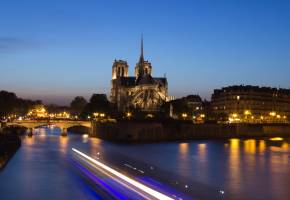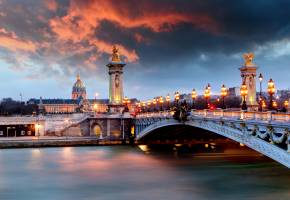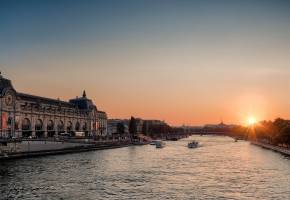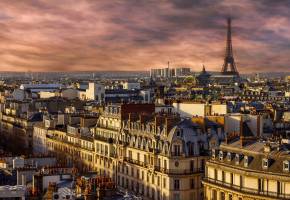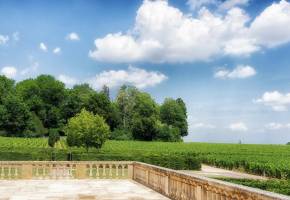The best path to see the Paris of Napoleon
Napoleon was the principal Emperor of France after the French Revolution from 1804-1814, and for a short time in 1815 during the Hundred Days War.
Napoleon rose to control after the French Revolution by holding elections and along these lines being chosen as First Consul.
At that point, the citizens of France were tired of the strife and viciousness that were brought on by the French Revolution and the Reign of Terror that followed it. Napoleon was able to persuade the French people that they required a steady leader and in this way announced himself Emperor.
A significant number of Napoleon’s reforms, for example, the Civil Code and the modern French administration, have had a long and enduring effect on France and Europe. It should not shock anyone that there is proof of his influence all through Paris!
Stage 1: Visit Napoleon's tomb at the Dôme des Invalides

Today, Napoleon rests in the Cathédrale Saint-Louis-des-Invalides, “on the banks of the Seine among the people of France whom he so much loved” as he expressed in his testimony.
The tomb lies directly under the Dôme des Invalides, in around grave. In the Invalides, you will discover the tombs of Napoleon’s son, just like those of his siblings Joseph and Jérôme.
Opening times: Every day 10 am - 6 pm
Address: 129 Rue De Grenelle, 75007 Paris
Metro: Varenne/La Tour-Maubourg
Stage 2: Visit the Cathédrale Saint-Louis-des-Invalides and the Army Museum

Les Invalides was a military clinic. It is appropriately called the Musée de l'Armée (the Army Museum in English)!
The Church is a tremendous piece of the Paris of Napoleon. It may have been assembled well before his rule, but it is enriched with flags caught from the enemies during the Napoleonic wars!
Don’t miss the painting Napoleon on the Imperial Throne, a representation of the Emperor done in 1804 by Ingres.
Opening times: Every day 10 am - 6 pm
Address: 129 Rue De Grenelle, 75007 Paris
Metro: Varenne/La Tour-Maubourg
Stage 3: Head to the Place Vendôme

Yair Haklai [CC BY-SA (https://creativecommons.org/licenses/by-sa/3.0)]
The segment is made out of stone, that represent scenes of battle and victory. At the highest point of the column stands a statue of Napoleon dressed as a Roman Emperor.
Opening times: a day in and day out
Address: Place Vendôme 75001 Paris
Metro station: Concorde, Tuileries, Pyramides
Stage 4: The Arc de Triomphe
The Arc de Triomphe is one of Paris' most acclaimed monuments, but not many know that it was based on Napoleon's initiative to celebrate his triumphs.
On the Arc, you will discover numerous bas-reliefs, which show scenes of Napoleonic battles, for example, Napoleon crossing the bridge of Arcole and the Battle of Abukir.
Opening times: Every day 10 am - 10 pm
Address: Place Charles De Gaulle, 75008 Paris
Metro station: Charles De Gaulle Étoile
Stage 5: Go to the Arc de Triomphe du Carrousel
The Arc de Triomphe du Carrousel is the great Arc de Triomphe's little brother. Also built by Napoleon in 1806 to honour his triumphs.
The first quadriga over the structure was taken from the Saint-Marc Cathedral in Venice, which was taken back to Paris by Napoleon.
After Napoleon’s defeat in 1815, the quadriga was taken back to Venice. The one that you see today is a duplicate of the original.
Opening times: every minute of every day
Address: Arc De Triomphe Du Carrousel, 75001 Paris
Metro station: Palais Royal Musée Du Louvre, Tuileries
Stage 6: Go to the Place de la Concorde

From the Place de la Concorde, you can head to the National Assembly on one side, the Madeleine church on the other.
The Madeleine was to be a sanctuary devoted to Napoleon’s military triumphs.
Napoleon requested that the back of the National Assembly, which faces the church, to match the corridors of the Madeleine.
At the point when you take a gander at the two colonnades which face each other today, you can truly observe the Paris of Napoleon!
Opening times: a day in and day out
Address: Place De La Concorde, 75008 Paris
Metro station: Concorde
Stage 7: Don't miss the Boulevards des Maréchaux
The Boulevards des Maréchaux (The Marshal's Boulevards in English) is a lot of boulevards which structure a circular route around Paris. Each segment of the Boulevard des Maréchaux bears the name of one of Napoleon's marshals.
Opening times: Monday-Friday 8 am-5.30 pm, Saturday 8.30 am-5.30 pm, Sunday 9 am-5.30 pm,
Address: 8 Boulevard De Menilmontant, 75020 Paris
Metro station: Père Lachaise/Philippe Auguste
Stage 8: Visit Le Château de Malmaison
A visit to the Paris of Napoleon wouldn't be completed without seeing Le Château de Malmaison, situated in the western rural areas of Paris.
Le Château de Malmaison was the home of Napoleon's first wife, the Empress Joséphine. Inside the château, you will see furniture typical of the neoclassical empire style.
If you like exploring old castles, you'll love this place!




